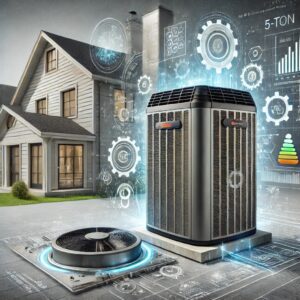SEER2 Ratings Explained: What It Means and Why It Matters
When it comes to choosing an air conditioner, understanding SEER2 ratings is crucial. These ratings measure how efficiently your AC unit cools your home, directly affecting your energy bills and environmental impact.
In this blog post, we’ll break down what SEER2 means, why it is important, and how investing in a high-SEER2 unit can save you money in the long run.
What is SEER2?
SEER2 stands for Seasonal Energy Efficiency Ratio 2. It’s an updated method of measuring air conditioner efficiency, using new testing procedures to provide a more accurate reflection of an AC unit’s performance under real-world conditions. The higher the SEER2 rating, the more efficient the AC unit.
To calculate SEER2, you take the total cooling output during a typical cooling season and divide it by the total energy used. For example, if an AC unit provides 36,000 BTUs of cooling and uses 1,000 kilowatt-hours of electricity, the SEER2 rating would be 36.
Why SEER2 Matters
Higher SEER2 ratings mean more efficient air conditioners. Efficient AC units use less electricity, which lowers your power bills. This not only saves you money but also reduces your environmental footprint. By choosing an AC unit with a high SEER2 rating, you are investing in long-term savings and sustainability.
Why Higher SEER2 Ratings Cost More
Units with higher SEER2 ratings tend to cost more upfront because they are built with advanced technology and materials. However, the initial investment pays off over time through reduced energy bills. For instance, a high-SEER2 unit might cost $1,000 more than a standard unit, but it could save you hundreds of dollars each year in energy costs.
Cost Comparison Example
Let’s break down potential savings:
- Standard AC Unit (14 SEER2): approximate annual energy costs of $600.
- High-SEER2 Unit (20 SEER2): approximate annual energy costs of $420.
Over 10 years, the high-SEER2 unit saves you $1,800 in energy costs, more than offsetting the higher initial price.
How to Calculate Efficiency Rate with SEER2
Calculating efficiency with SEER2 is straightforward. Here’s a simple step-by-step guide:
- Find the SEER2 Rating: This is usually listed on the AC unit or in the product specifications.
- Estimate Cooling Output: Measure the cooling provided over a season (in BTUs).
- Calculate Energy Use: Determine the total electricity consumed (in kilowatt-hours).
- Apply the Formula: SEER2 = Total Cooling Output (BTUs) / Total Energy Used (kWh).
Higher SEER2 ratings indicate greater efficiency, leading to lower energy costs.
Investing in High-Rate SEER2 Units
When choosing an AC unit, consider these factors:
- Initial Cost: Higher SEER2 units cost more upfront but offer long-term savings.
- Energy Savings: Reduced power bills over the unit’s lifespan.
- Environmental Impact: Lower energy use means a smaller carbon footprint.
Tips for Choosing a High-SEER2 Unit
- Look for SEER2 ratings of 16 or higher.
- Check for ENERGY STAR certification.
- Consider the climate in your area; higher SEER2 ratings are more beneficial in hot climates.
Conclusion
Understanding SEER2 is essential for making an informed decision about your air conditioning system. Higher SEER2 ratings may cost more initially, but they offer significant savings on energy bills and benefit the environment. At Flow-Tech, we’re here to help you choose the best high-SEER2 AC unit for your home, ensuring comfort and efficiency.
Additional Resources
For more information, check out our related articles and feel free to contact Flow-Tech for personalized assistance. You can check this SEER2 efficiency calculator to have an idea of the power bill price decrease. Don’t forget to share this article with friends and family who might find it helpful!

